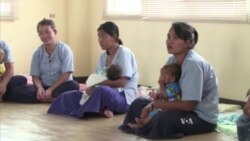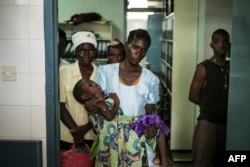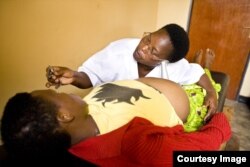AIDS looks vastly different today than it did the last time the International AIDS Conference was held in South Africa 16 years ago. For one thing, while new infections continue, more people are on treatment, and unborn babies are no longer destined to contract the virus if their mothers are infected.
This year, Thailand eliminated mother-to-child HIV transmission, the first country in Asia to do so, and other developing countries, like Haiti, are close behind.
Governments, scientists and U.S. health agencies are working hard to end mother-to-child transmission of HIV/AIDS around the world.
"Mother-to-child transmission is one of the greatest success stories in HIV research, but there are still 150,000 children in low- and middle-income countries who become infected with HIV every year," said Rachel Sturke, a senior scientist at Fogarty International, a division of the National Institutes of Health.
The challenge is getting HIV-infected women on treatment and keeping them on it for life. Obstacles abound. The clinics may be too hard to get to, or too far away. Getting and staying on the medicine can be difficult, too. And there's still a stigma attached to having HIV.
A team of scientists led by the National Institutes of Health has been studying ways to prevent mother-to-child transmission.
"We have the tools at this moment to further decrease the incidence of new infections, but we need to apply these tools more effectively to reach the undiagnosed and untreated mothers," Fogarty Director, Dr. Roger Glass, and U.S. Global AIDS Coordinator, Dr. Deborah Birx, wrote in the forward to a series of articles published in the Journal of Acquired Immune Deficiency Syndromes.
Testing at churches, homes
Sturke is one of the researchers looking at ways to keep babies free from HIV.
"One of the research studies that we funded look at convening testing and treatment at the church instead of a clinic," she said.
Researchers found that if pastors invited pregnant women to church for baby showers, which included HIV testing, almost twice as many women got screened and on treatment than when clinics provided the same benefits.
Researchers also found that offering testing and counseling at home meant twice as many men got tested and on treatment than clinic-based testing, because men are generally more reluctant to go to a clinic.
For this approach — called implementation science —researchers study how to integrate research findings and other evidence-based practices into routine care and services.
Success in Thailand
The Centers for Disease Control found what worked in Thailand.
In a Skype interview, Dr. Tom Frieden of the CDC explained the three keys to Thailand's success.
"The first was to make sure that they had the right technical package: that they were giving the right medications in the right way,” he said. “The second was to ensure that they had the right operational systems integrating maternal care so it ... [was] actually part of the routine care. And the third was political support, ongoing support."
The CDC has worked with Thai scientists and the government for more than 20 years, but the tools are available to help other countries achieve this same success in breaking mother-to-child transmission in far less time. The challenge is to make it happen.














